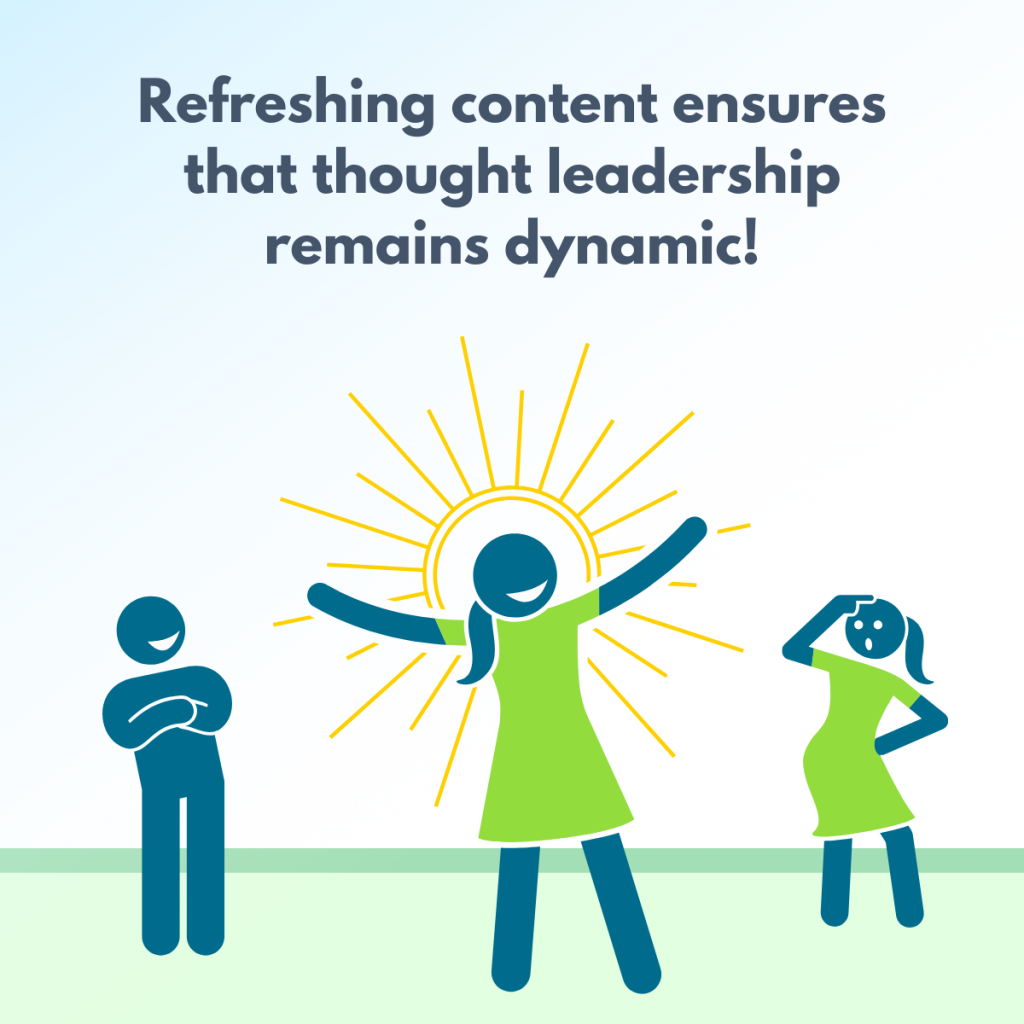In the realm of thought leadership, it’s not uncommon
to rely on what could be termed as “crutch content.”
This refers to certain ideas💡, concepts, or narratives 🧾
that thought leaders continue to use even when the content is outdated
or no longer reflective of the current landscape. 📉
Here are a few examples:
🛑 Overused Analogies:
Some thought leaders may lean on analogies or metaphors
that were once powerful but have become clichéd or outdated.
🗓️ Dated Statistics:
Using statistics to support your arguments is a common practice
in thought leadership. However, relying on outdated or no longer
relevant statistics can weaken your credibility.
📈 Past Success Stories:
Sharing success stories is a powerful way to illustrate points and inspire others.
However, if a thought leader consistently relies on the same success stories
without introducing new examples or updating the outcomes,
it may lead to a sense of stagnation.
🕷️ Obsolete Industry Trends:
Industries are dynamic, and trends evolve over time.
Thought leaders who continually reference outdated industry trends might lose relevance.
🐝 Buzzwords and Jargon:
Thought leaders sometimes rely on buzzwords or industry jargon to convey authority.
However, using these terms without a clear understanding of their current relevance
can make your content feel outdated and detached.
To avoid falling into the trap of “crutch content,”
thought leaders should prioritize ongoing learning,
stay abreast of industry developments,
and regularly update their perspectives.
—
I write about
ThoughtLeadership #OrgTL and Brand
 B
B

